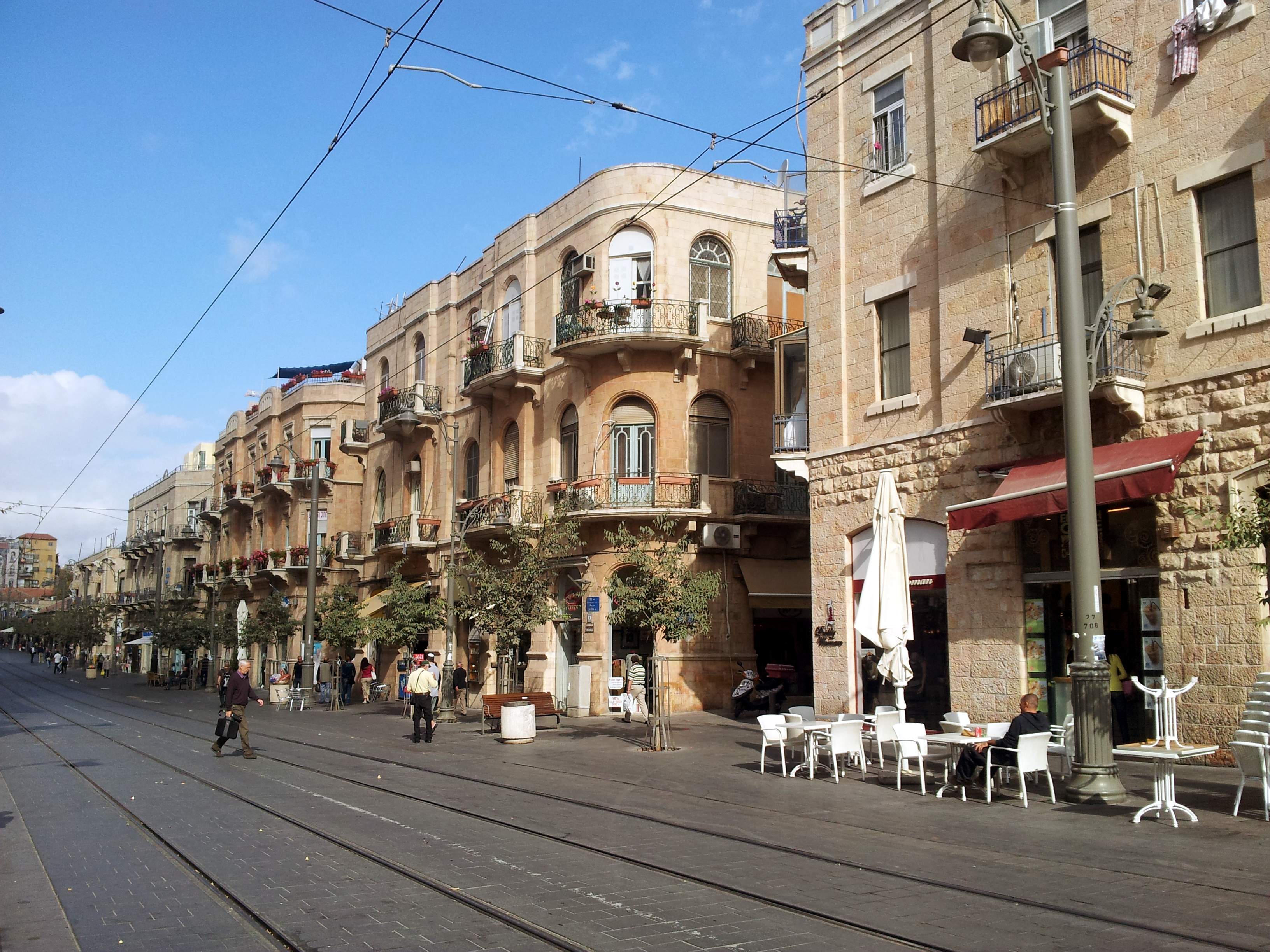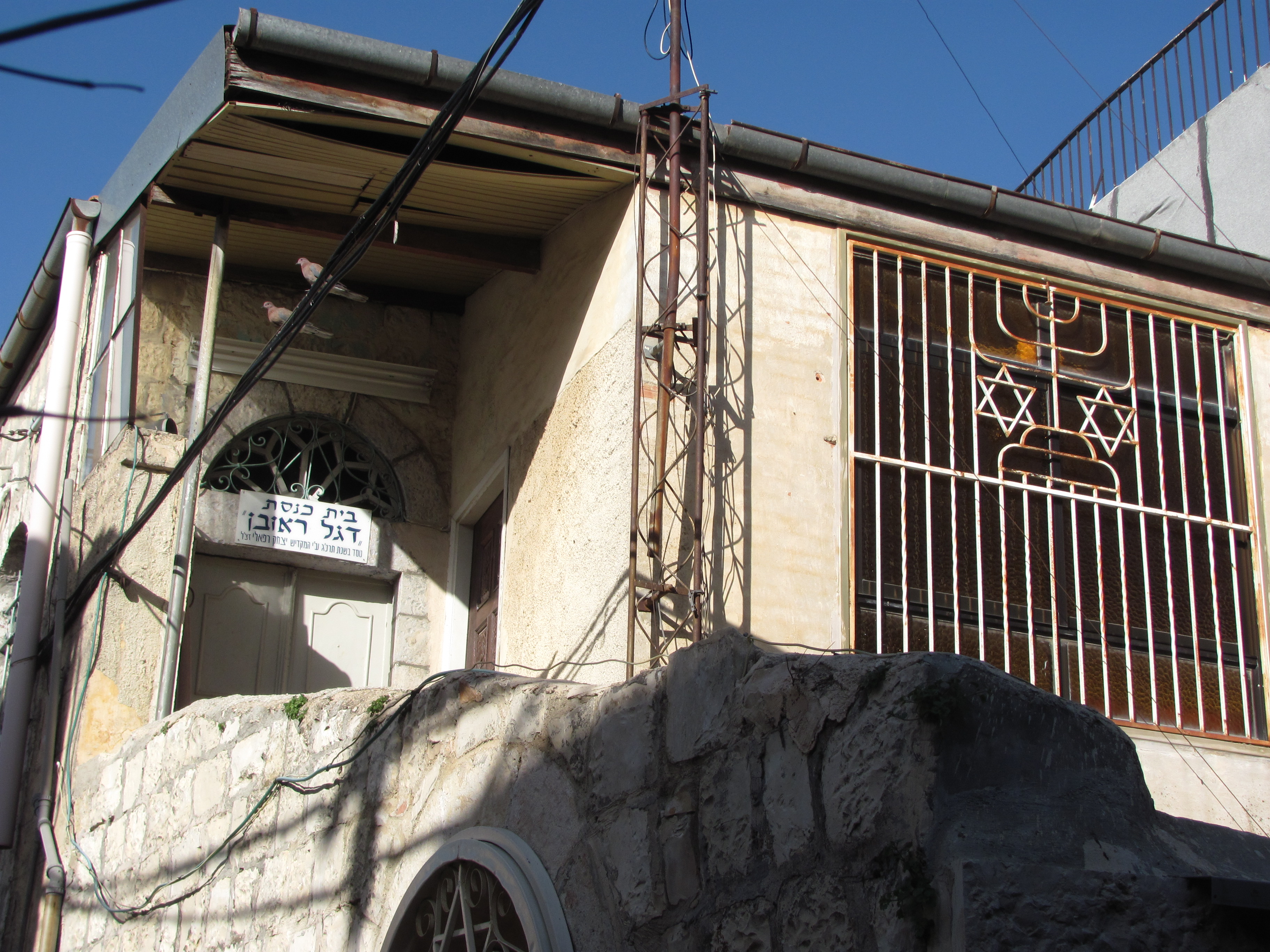|
Jaffa Street
Jaffa Road ( he, רחוב יפו, Rehov Yaffo; ar, شارع يافا) is one of the longest and oldest major streets in Jerusalem. It crosses the city from east to west, from the Old City walls to downtown Jerusalem, the western portal of Jerusalem and the Jerusalem-Tel Aviv highway. It is lined with shops, businesses, and restaurants. It joins with Ben Yehuda Street and King George Street to form the Downtown Triangle central business district. Major landmarks along Jaffa Road are Tzahal Square ( IDF square), Safra Square (city hall), Zion Square, Davidka Square, the triple intersection (''Hameshulash'') at King George V Street and Straus Street, the Ben Yehuda Street pedestrian mall, the Mahane Yehuda market, and the Jerusalem Central Bus Station. Jaffa Road has been redeveloped as a car-free pedestrian mall served by the Jerusalem Light Rail. History Originally paved in 1861 as part of the highway to Jaffa, the road quickly became a focal point for the 19th ... [...More Info...] [...Related Items...] OR: [Wikipedia] [Google] [Baidu] |
Jerusalem
Jerusalem (; he, יְרוּשָׁלַיִם ; ar, القُدس ) (combining the Biblical and common usage Arabic names); grc, Ἱερουσαλήμ/Ἰεροσόλυμα, Hierousalḗm/Hierosóluma; hy, Երուսաղեմ, Erusałēm. is a city in Western Asia. Situated on a plateau in the Judaean Mountains between the Mediterranean Sea, Mediterranean and the Dead Sea, it is one of the List of oldest continuously inhabited cities, oldest cities in the world and is considered to be a holy city for the three major Abrahamic religions: Judaism, Christianity, and Islam. Both Israelis and Palestinians claim Jerusalem as their Capital city, capital, as Israel maintains its primary governmental institutions there and the State of Palestine ultimately foresees it as its seat of power. Because of this dispute, Status of Jerusalem, neither claim is widely recognized internationally. Throughout History of Jerusalem, its long history, Jerusalem has been destroyed at least twice, Sie ... [...More Info...] [...Related Items...] OR: [Wikipedia] [Google] [Baidu] |
Jaffa Road Jerusalem 2012
Jaffa, in Hebrew Yafo ( he, יָפוֹ, ) and in Arabic Yafa ( ar, يَافَا) and also called Japho or Joppa, the southern and oldest part of Tel Aviv-Yafo, is an ancient port city in Israel. Jaffa is known for its association with the biblical stories of Jonah, Solomon and Saint Peter as well as the mythological story of Andromeda and Perseus, and later for its oranges. Today, Jaffa is one of Israel's mixed cities, with approximately 37% of the city being Arab. Etymology The town was mentioned in Egyptian sources and the Amarna letters as ''Yapu''. Mythology says that it is named for Yafet (Japheth), one of the sons of Noah, the one who built it after the Flood. The Hellenist tradition links the name to ''Iopeia'', or Cassiopeia, mother of Andromeda. An outcropping of rocks near the harbor is reputed to have been the place where Andromeda was rescued by Perseus. Pliny the Elder associated the name with Iopa, daughter of Aeolus, god of the wind. The medieval Arab geog ... [...More Info...] [...Related Items...] OR: [Wikipedia] [Google] [Baidu] |
Anglo-Palestine Bank
Bank Leumi ( he, בנק לאומי, lit. ''National Bank''; ar, بنك لئومي) is an Israeli bank. It was founded on February 27, 1902, in Jaffa as the ''Anglo Palestine Company'' as subsidiary of the Jewish Colonial Trust (Jüdische Kolonialbank) Limited formed before in London by members of the Zionist movement to promote the industry, construction, agriculture, and infrastructure of the land hoped to ultimately become Israel. Today, Bank Leumi is Israel's largest bank (by total assets as of 2015), with overseas offices in Luxembourg, US, Switzerland, the UK, Mexico, Uruguay, Romania, Jersey, and China. Though nationalized in 1981, now Bank Leumi is mainly in private hands, with the government as the largest single shareholder, with 14.8% of the stock (as of June 2006). The other major shareholders are Shlomo Eliyahu and Branea Invest, which each hold 10% of the stock, constituting the control core of the bank. Sixty percent of the bank's stocks are held by the public and t ... [...More Info...] [...Related Items...] OR: [Wikipedia] [Google] [Baidu] |
Mandatory Palestine
Mandatory Palestine ( ar, فلسطين الانتدابية '; he, פָּלֶשְׂתִּינָה (א״י) ', where "E.Y." indicates ''’Eretz Yiśrā’ēl'', the Land of Israel) was a geopolitical entity established between 1920 and 1948 in the region of Palestine under the terms of the League of Nations Mandate for Palestine. During the First World War (1914–1918), an Arab uprising against Ottoman rule and the British Empire's Egyptian Expeditionary Force under General Edmund Allenby drove the Ottoman Turks out of the Levant during the Sinai and Palestine Campaign. The United Kingdom had agreed in the McMahon–Hussein Correspondence that it would honour Arab independence if the Arabs revolted against the Ottoman Turks, but the two sides had different interpretations of this agreement, and in the end, the United Kingdom and France divided the area under the Sykes–Picot Agreementan act of betrayal in the eyes of the Arabs. Further complicating the issue was t ... [...More Info...] [...Related Items...] OR: [Wikipedia] [Google] [Baidu] |
German Colony Of Jerusalem
, settlement_type = Neighborhood of Jerusalem , image_skyline = Cremieux Street, German Colony, Jerusalem.jpg , imagesize = 300px , image_caption = Cremieux Street , subdivision_type = Country , subdivision_name = , subdivision_type1 = District , subdivision_name1 = Jerusalem District , subdivision_type2 = City , subdivision_name2 = Jerusalem , established_title = Foundation , established_date = 1873 , founder = German Templer Society , population_footnotes = , population_as_of = 2017 , population_total = 1,930 , area_code_type = Area code , area_code = The German Colony ( he, המושבה הגרמנית, ''HaMoshava HaGermanit'') is a neighborhood in Jerusalem, established in the second half of the 19th century as a German Templer Colony in Palestine. Today the Moshava, as it is popularly known, is an upscale neighborhood bisected by Emek Refaim Street, an avenue l ... [...More Info...] [...Related Items...] OR: [Wikipedia] [Google] [Baidu] |
Templers (religious Believers)
The German Templer Society emerged in Germany during the mid-nineteenth century, with its roots in the Pietist movement of the Lutheran Church, and in its history a legacy of preceding centuries during which various Christian groups undertook to establish what they saw as the perfect Christian religion in preparation for Christ's promised return. The movement was founded by Christoph Hoffmann [1815-1885], who believed that humanity’s salvation lay in the gathering of God's people in a Christian community. He also believed that the second coming of Christ was imminent, and that according to Biblical prophecy it would take place in Jerusalem, where God's people were to gather as a symbol of the rebuilding of the temple. He established a number of German Templer colonies in Palestine, German Templer colonies in Palestine (region), Palestine. Hoffmann’s thinking was inspired by the 1st century Christian community and based on Matthew’s Gospel in regard to Old Testament propheci ... [...More Info...] [...Related Items...] OR: [Wikipedia] [Google] [Baidu] |
Carriage
A carriage is a private four-wheeled vehicle for people and is most commonly horse-drawn. Second-hand private carriages were common public transport, the equivalent of modern cars used as taxis. Carriage suspensions are by leather strapping and, on those made in recent centuries, steel springs. Two-wheeled carriages are informal and usually owner-driven. Coaches are a special category within carriages. They are carriages with four corner posts and a fixed roof. Two-wheeled war chariots and transport vehicles such as four-wheeled wagons and two-wheeled carts were forerunners of carriages. In the twenty-first century, horse-drawn carriages are occasionally used for public parades by royalty and for traditional formal ceremonies. Simplified modern versions are made for tourist transport in warm countries and for those cities where tourists expect open horse-drawn carriages to be provided. Simple metal sporting versions are still made for the sport known as competitive driving. ... [...More Info...] [...Related Items...] OR: [Wikipedia] [Google] [Baidu] |
Shaare Zedek Medical Center
The Shaare Zedek Medical Center ( he, מרכז רפואי שערי צדק, ''Merkaz Refu'i Sha'arei Tzedek'') (lit. "Gates of Justice") is a large teaching hospital in Jerusalem established in 1902, It affiliated with Hebrew University of Jerusalem History Shaare Zedek was the first large hospital to be located in the Western portion of Jerusalem and is today the city's fastest growing hospital and the only major medical facility in the city's center. After the Ottoman Turks gave permission in the 1890s, and with funding from European donors, the hospital was built on Jaffa Road, two miles (3 km) outside the Old City. The design was by German architect Theodor Sandel 'German'' Its opening ceremony took place on January 27, 1902. Dr. Moshe Wallach was the director from then until 1947. Schwester Selma lived in the hospital and cared for abandoned children. The building in Bayit Vegan was inaugurated in 1980. In December 2012, Shaare Zedek assumed operational contro ... [...More Info...] [...Related Items...] OR: [Wikipedia] [Google] [Baidu] |
Mahane Yehuda (neighborhood)
Mahane Yehuda ( he, מחנה יהודה, "Camp of Judah") is a historic neighborhood in Jerusalem. Established on the north side of Jaffa Road in 1887, it was planned and managed by the consortium of Swiss-Christian banker Johannes Frutiger and his Jewish partners, Joseph Navon and Shalom Konstrum. By the end of the 19th century, it encompassed 162 homes. Originally occupied by upper middle-class residents, it became a working-class neighborhood beginning in the late 1920s. Today the neighborhood is part of Nachlaot. The Mahane Yehuda Market ("the shuk") located across the street was named after the neighborhood. Name Mahane Yehuda was named after Joseph Navon's brother, Yehuda, who died at a young age. Location The Mahane Yehuda neighborhood is bordered by David Yellin Street to the north, Yosef ben Matityahu Street to the east, Jaffa Road to the south, and Navon Street to the west. History Mahane Yehuda lay on land owned by Bank Frutiger, which owned other tracts around the c ... [...More Info...] [...Related Items...] OR: [Wikipedia] [Google] [Baidu] |
Nahalat Shiva
Nahalat Shiv'a ( he, נחלת שבעה) is a former courtyard neighborhood Courtyard neighborhoods are Jewish neighborhoods built in Jerusalem and Tel Aviv in the late 19th and early 20th centuries. The inward-facing and defensible traditional urban housing of the Near East, ordinarily occupied by an extended family, was ... in Jerusalem. It was the third Jewish neighborhood built outside the walls of the Old City (Jerusalem), Old City of Jerusalem in the 1860s. Today it is a crowded pedestrian promenade lined with sidewalk cafes. It is adjacent to the Downtown Triangle (Jerusalem), Downtown Triangle of central Jerusalem. Name ''Nahala'' is the Hebrew word for heritage or estate. Nahalat Shiv'a means "Estate [of the] Seven", referring to the seven founding families. History Nahalat Shiv'a was the third residential neighborhood built outside the city walls. There are two stories regarding the purchase of the land. Yosef Rivlin claimed he raised the money on a trip to Russia i ... [...More Info...] [...Related Items...] OR: [Wikipedia] [Google] [Baidu] |








